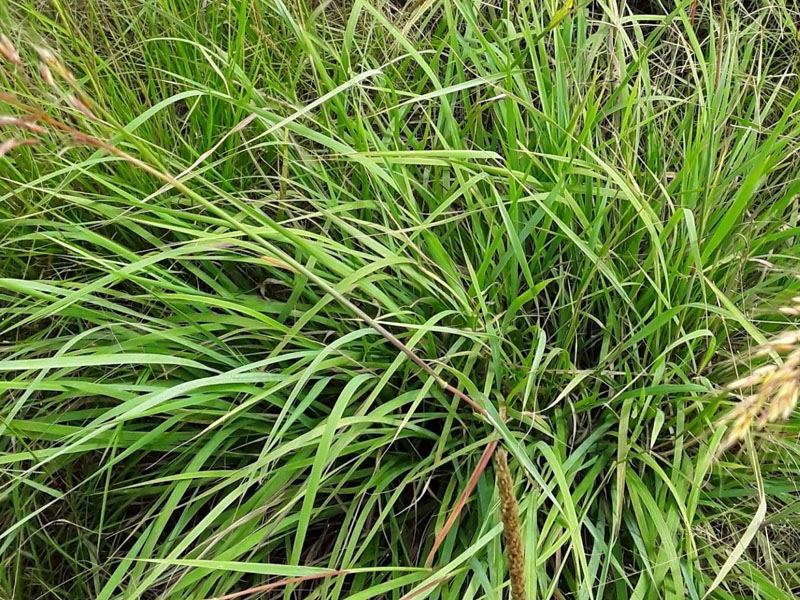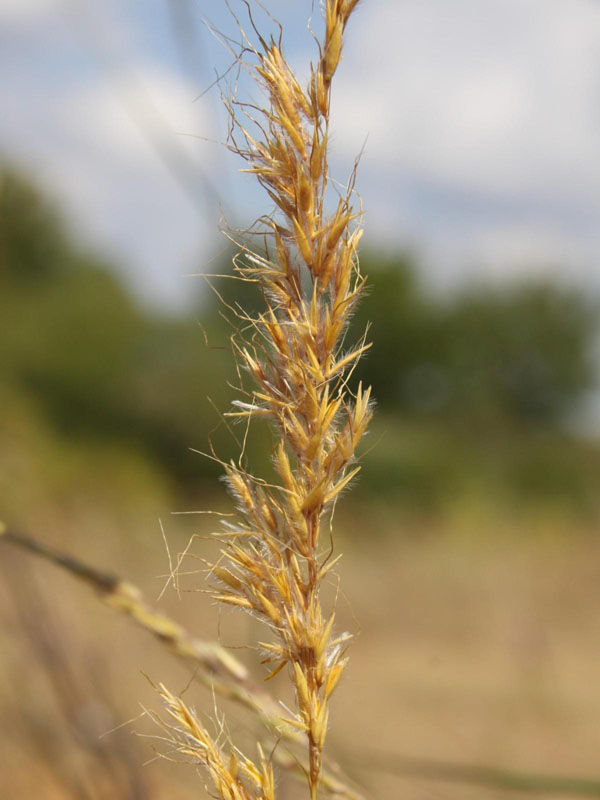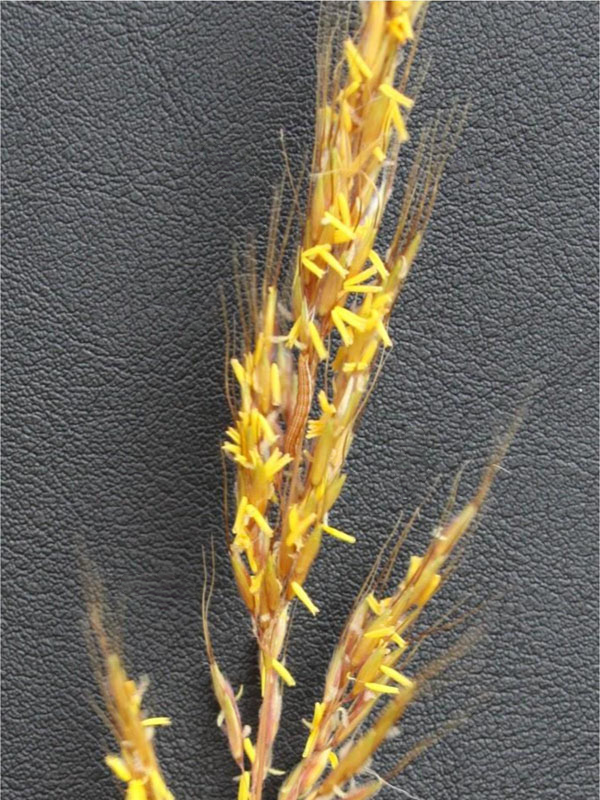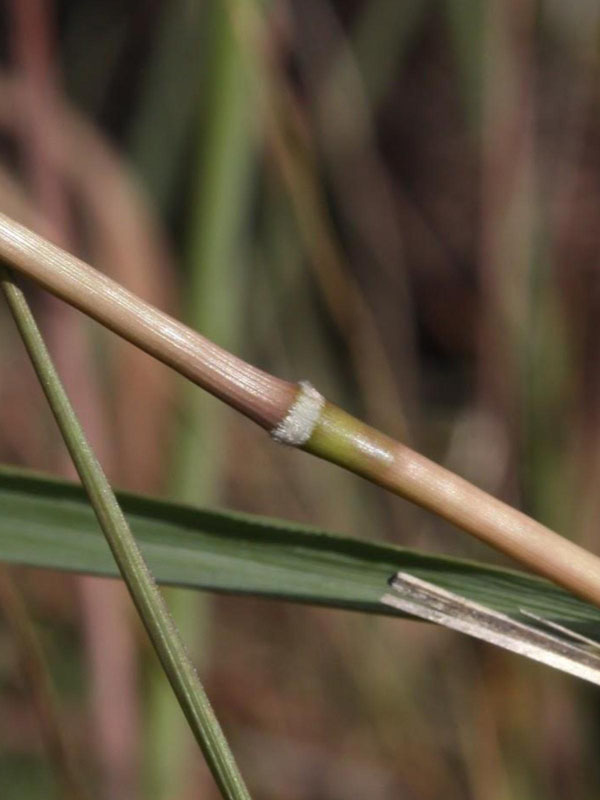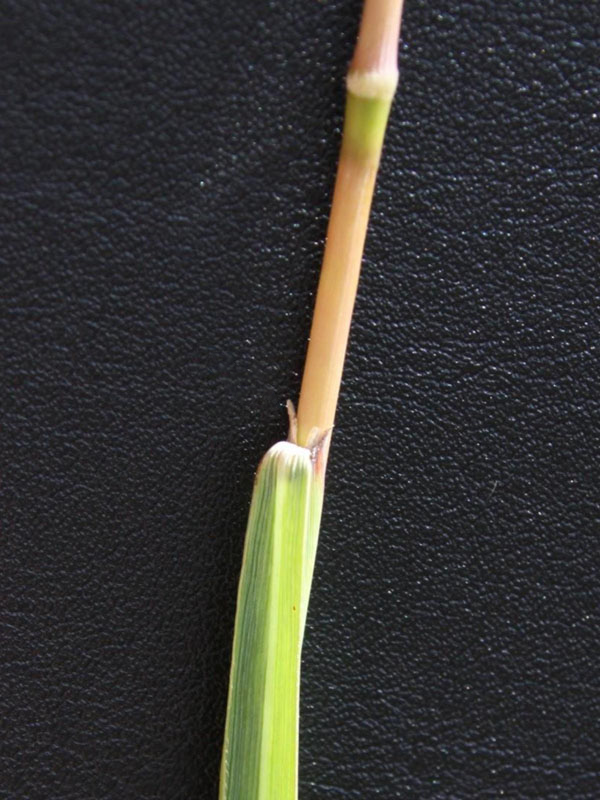Indiangrass
| Plant Profile | |
|---|---|
| FYUSE 3d Image |
Common Name: Indiangrass Species Name: Sorghastrum nutans Plant Type: Grasses & Grass-like Family Name: Poaceae, Grass Family Tribe: Andropogoneae, Bluestem Tribe |
Examples of IndiangrassSorghastrum nutans
| Plant Facts | |
|---|---|
| Origin | Native |
| Duration | Perennial |
| Season | Warm |
| Distribution in the U.S. | Eastern two-thirds of the continent and southward into central Mexico |
| Distribution in Oklahoma | Throughout the state |
ID Characteristics
- Field Identification Characteristics
Vegetative
- Blue-green foliage
- “Rabbit ears” or “gun sight” upright auricles at base of blade
- Hairy nodes
Floral
- Large, hairy seed head; coppery or chestnut colored
- Spikelets with awns
- Leaf and Stem Characteristics
- Plant Height: 90-200 centimeters
- Ligule Type: Ciliate membrane
- Sheath: Glabrous
- Leaves: Basal and cauline
- Floral Characteristics
- Inflorescence Type: Panicle
- Florets Per Spikelet: 1
- Glumes: Equal
| Habitat/Ecology | |
|---|---|
| Soil Type | Moist sand, loam and clay |
| Habitat | Tallgrass prairie, clearings, glades and open woods |
| Successional Stage | Mid to late |
| Uses/Management | |
|---|---|
| Wildlife | Used by livestock throughout the summer. Does not cure well, considered only fair forage for fall and winter grazing. Highly palatable in the summer but only fairly palatable after maturity. Provides a good source of protein and vitamin A throughout the summer when leaves are green. Digestibility and crude protein decrease as plants mature. Spring burning (April 1-15) increased digestibility. Intolerant of repeated close grazing; decreaser on all range sites. May decrease during drought, but recovers rapidly when precipitation returns to normal. Cutting Indiangrass at the hay stage has showed a decrease in plant density, but cutting at monthly intervals during the summer caused little or no decrease. |
| Grazing | Highly palatable; good source of protein and Vitamin A for wildlife in the summer when plants are actively growing. Fair forage in fall and winter once the plant matures. Excellent protective and nesting cover for pheasants, northern bobwhite, mourning doves, prairie chickens, and several songbirds. |
Topics:

